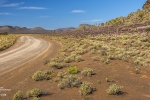
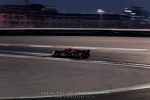
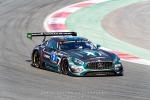
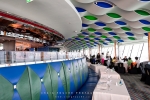
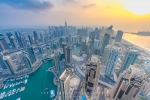
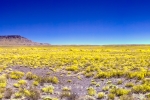
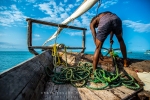
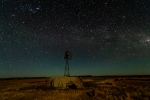
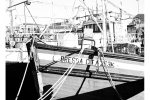
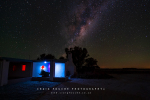
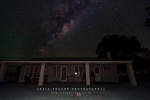

Film Photography – WHY and HOW to get started is a question many people may ask, especially in a modern digital era of instant gratification. My reply is sometimes why not? The thing is, analogue photography has been around for way over 100 years, and people are still discovering undeveloped film in vintage cameras, or old boarded up studios that were long forgotten and are still able to print or develop images from that era. With the rapid changes and growth in the digital world, how many can still use a Commodore 64, floppy drive or even DOS 6? In 50 years you could very well print negatives if the chemistry is available, many recipes and formulas abounding on the internet, so I see that as being very doable!
Film photography tends to get romanticized these days.
I know this sounds far-fetched but bear with me. Medium-format film, in particular has many really interesting advantages over 35mm roll film (and digital DSLRs). The depth of field is better because of the larger film area, images are sharper because they’re usually scaled up less than 35mm (which also allows them to be enlarged a lot more). Thanks to some optical trickery, they more closely emulate what the world looks like to the human eye. A roll of medium-format film depending on the format has anything from 4 to 16 frames per roll and costs around US$15 – 30 to buy, lab develop & scan in South-Africa, depending on the choice of film. This translates to just over $1 per image might seem unbelievably expensive until you consider the digital alternative!
If you want to shoot medium format digitally, Karl Taylor springs to mind, a brand ambassador for Hasselblad who owns an H6 series which at the time of writing sells for a whopping US$48000! That’s the cost equivalent of a film-based Hasselblad 500C/M and way over 4600 rolls of film. In all fairness, you will need to buy a good scanner to get the best results out of your film shots. Including that, it is still a significant saving unless you’re shooting a lot and getting compensated well for it. Bang for buck – film versus digital, you can get amazing results from medium-format film photography without auctioning off your vital organs to the highest bidder.
All DSLR cameras have a manual mode and manual focus, not many people shoot in manual mode. I personally only shoot in manual mode when using cine lenses on my DSLR, I favour aperture mode the most. When shooting medium and large format, it is manual mode all the way! A fully manual film camera conjures up rules of thumb like “Sunny 16” and guide number flash distance. In modern times, people are spoilt with built-in autofocus and auto exposure, and somehow never really get to explore or understand the workings of their camera, and what other creative results they may achieve. When shooting film, I make every frame count, either to be error-free or with the purpose to print.
It was not hard to not be blown away when I got to shoot my Pentax 6×7 for the first time! An iconic camera with a mirror slap that is so legendary and was a professional camera system of many well-known photographers from the 70s onwards. Its popularity has grown extensively, just search on YouTube and you will find the iconic following it has some 40 years later! As far as quality goes, you can’t beat a lot of old film cameras. Demand for these and other cameras have certainly pushed prices of film cameras up on eBay, mostly due to a younger generation of photographers shooting film for the first time, check out Willem Verbeeck on YouTube to see the following he has – just over 260 000. Just yesterday I was gifted a Kodak Brownie A2 Autographic Camera which was manufactured between 1915 and 1926. You no longer get 116 film, however, you can buy adapters to use 120 film in this camera and will get 6 panoramic-format photographs with a size of about 11x6cm 4¼ x 2½” per roll. I am looking forward to shooting this when my adapters arrive!
One of the best parts about film is that things look so great right out of the camera. Ever shot film, developed and collected your prints from the lab, we never had photoshop in those days, and yes they were great straight out of the camera! Ilford, Fuji, Kodak and many other film companies have spent years and millions of dollars perfecting their films for beautiful levels of contrast, grain and colour so all you have to do is focus and take the shot. Sure, you can edit your scans in Photoshop or photo editing software of our choice, like everything else, but you really don’t have to if you don’t want to. Digital RAW will always need post-processing — and you can see why it’s so refreshing not to spend hours in Photoshop adjusting colour balances and tone curves.
It’s really fun to shoot a roll of film, and that’s because you have no idea what you’re going to get, sometimes if anything at all! I shot a swimming gala championship on digital and film in December 2020 the film was both fresh and expired; I had no idea what my results would be on expired film or how bad the colour shifts would be etc. It is so rewarding when you get it right! The black box magic of photography is back and it isn’t a combination of ones and zeros, but rather light coming in and reacting with little chunks of silver halide and producing an image. You won’t get to see the results until the moment has long passed — and that’s pretty scary if it’s something important. You need to trust the process, believe in yourself, understand your gear and capture what you see. It’s a little bit random and a little bit terrifying, but so rewarding when you get it right. And that’s the thing about film: you can talk about it endlessly and rationalise it with however many hundreds of words, but until you load a roll and give in to the haphazardness of this 200-year-old chemical process, you’ll never quite know what everybody else is on about. Film is still well and truly alive!
There are many film photography pages and groups on social media, some are more than helpful when it comes to sharing knowledge, others not. One can learn so much by simply “stealing with your eyes”. It is free and you don’t even need to own a camera! So where and how do we get started? I will explain this in two parts, for those that shoot, lab develop and upload online, and secondly for those that shoot, develop at home and upload online.
You will need the following:
The film format is entirely up to you, 35mm is probably the easiest to go with, in my case I am a Nikon shooter, all my modern lenses are backwards compatible with my Nikon film bodies. I am able to shoot vintage Nikon glass and modern glass on both my film and digital bodies.
Film, that is a question of taste and look that you desire. I used to shoot Agfa professional film in colour, slide and black and white. It obviously no longer exists and I now favour the pastel colours of Kodak Portra for colour and portraits, Ektar for punchy landscapes – often described as the poor man’s slide film in a print version, and Tmax for the fine T-grain black and white images I shoot. I also favour Tri-X which is a gritty square/cubic grain and a longstanding press classic film for when the occasion arises.
Kodak Portra is Kodak’s most popular roll film is available in ISO 160, 400 and 800 in various sizes. ISO 400 is the most versatile, easily coping with being under and over-exposed without getting too grainy. Portra of all speeds renders skin tones beautifully, scans better than most films and has an incredibly pleasant grain structure.
Kokak Ektar 100 is another gem. It boasts more saturation and contrast than Portra and an amazingly fine grain structure. As a result, pictures tend to not look all that “film-y”, which can be a good or bad thing depending on what you want. It’s only available in ISO 100, so you’ll need quite a bit of light, but the sharpness you’ll end up with is amazing. Generally all film likes lots of light, unlike digital which doesn’t.
Kodak Ektachrome E100 is a film I am still yet to shoot: Kodak E100 delivers extremely fine grain, brighter whites, and features moderately enhanced color saturation with a neutral color balance and a low contrast tone scale. This film is designed for exposure with daylight or electronic flash.
Kodak Tri-X 400: Think of any iconic black and white photo you’ve seen; odds are it was shot on Tri-X. Kodak’s hallmark black-and-white film has been around forever and its easy development, good-looking grain structure, perfectly balanced contrast and killer shadow detail mean it won’t likely leave the throne soon. If you’re going to start developing your own film or just want a great medium-speed black-and-white film, Tri-X is the easy choice.
Fuji slide film such as Velvia 50 and 100 for landscapes, Provia 100F for landscapes and portraits are my choices here.
Fujicolor Pro 400H: Fuji negative films have always had a distinctive look that’s attracted loyalists. Compared to Kodak, Fuji usually has a slightly greener, slightly colder tone usually injects a bit more emotion into a given picture. Fujicolor Pro 400H is a great film to keep in your bag if you’re looking for more contrast and moodier colors compared to Portra. This film has just recently been discontinued, I still have a few 35mm bricks in my fridge for future use.
Fujichrome Provia 100F: Ever since Kodachrome was retired at the end of 2010, Fuji has been the only game in town when it comes to true slide film (though Ektar does a pretty good job mimicking it). Luckily, they’re doing a damn good job. Slide film is characterized by strong, saturated colors, sharp contrast, fine grain, a more fickle exposure range (slide film can usually only be recoverable when under- or over-exposed by one stop compared to negative film’s three or four) and, of course, a color-positive film. Provia is Fuji’s more neutral option with natural colors and less contrast than their vibrant Velvia. You’ll need a lot of light and a good exposure, but the results are some of the best you’ll find for general-purpose shooting.
Fujichrome Velvia 50: When people talk about slide film these days they’re almost always talking about Velvia. The strong contrast, strong color film has taken over Kodachrome’s place as the low-ISO choice for those wanting amazing results right out of the camera. It’s great for landscapes and still life but isn’t the best at reproducing skin tones because Fuji’s typical greenish-purplish cast is even more pronounced in Velvia.

Nieuwoudtville Wildflower Reserve, Nieuwoudtville, South-Africa – Fuji Provia 100F Craig Fouché Photography ©2018
Ilford Delta series is much like the Kodak Tmax series, a fine grain black and white. FP4 and HP5 are very much like the gritty Tri-X film from Kodak.
Ilford PanF 50: Just the opposite of Delta 3200, PanF 50 is the perfect black-and-white film when you have light to spare and want sharp images with minimal grain and excellent dynamic range — showing detail in the darkest and lightest portions of an image. Simply put, if you want the highest-resolution from Ilford black-and-white film, this is the one you want.
Ilford Delta 3200: Boasting three extra stops of light sensitivity over 400 speed film (that’s going from 1/15 shutter speed to 1/120 at a given aperture), Delta 3200 is the only choice when you need a super-sensitive low-light film. The grain is definitely pronounced, but if it’s exposed right the grain is minimized into a really pleasing pattern that’ll leave no doubt what film you shot on.
Rollei IR is an infrared film and I do like other Rollei film stocks like the RPX series as well.
Rollei IR is the last true infrared film availble.
Fomapan is a good budget film, Foma Bohemia spol. s.r.o is a photographic company based in Hradec Králové, Czech Republic established in 1921, originally as Fotochema.
Adox is another one of my favourite black and white films that I shoot.
Adox CMS 20II: No other film is sharper, no other film has finer grain or higher resolution. Nearly grain-free and ultra-sharp enlargements can be made up to an image size of 2.5 meter diagonal. This is roughly equivalent to a 500 megapixel resolution. ADOX ADOTECH IV developer is the special developer for ADOX CMS 20 II for optimal results in classic pictorial half- tone photography. ADOTECH IV is designed to bring the perfect gray scales and tonality to this otherwise very hard-contrast film material and will give you images with such incredible detail that no one will believe that they were shot on 35mm film.
I find film in South-Africa too expensive, I buy in bulk from abroad: Kodak & Ilford – USA; Fomapan, Rollei and Adox – Germany; Ilford – UK price dependant and Fuji – USA; unusual films like Lomo purple etc – the UK.
This is entirely up to you. You can edit your scans from the lab or leave them be, upload online to social media etc. Some people are pedantic about how true film images should be, end of the day, film was “edited” in the darkroom and retouched as well.
You will need the following:
In my case, I predominantly use Photoshop for all my editing, however with film I use a plugin which runs in Lightroom made by Negative Lab Pro. There are many options out there, this is my preference as they have a great Facebook page and community support. This plugin is well worth the money spent for what it does.
I was very fortunate to find a mint secondhand Epson V750 scanner, it serves all my needs from 35mm to 8×10. Should I require higher resolution scans, Raphael Helman is my go-to man when it comes to scanning. His website is LabStudio and can do the following scans on an Imacon Precision iii Scanner as per his website. Currently in South-Africa no-one is capable of drum scanning, there are photographers like Alex Burke and Michael Strickland that do offer this service in the USA. Orms in Cape Town and RGB Pixellab in Pretoria offer scanning services to film photographers.
These can be sourced amongst the local film communities or bought either locally (Tothills in Cape Town or Kameraz In Johannesburg) or internationally. I bought my tanks from Nik & Trick, UK, Fotoimpex in Berlin and B&H are also great suppliers of darkroom accessories. Depending on what format you shoot, the tank size and reels will also be determined. Some people favour the white plastic reels vs the stainless steel reels, some prefer the steel tank vs Paterson tanks as opposed to the Jobo tanks. Large format photographers have a few options or either to develop in trays in the darkroom. Find a style and system that works for you. I use Paterson tanks with white reels for 35mm, 120 and 127 format; and for large format – 2oth Century Camera reels for 4×5, 5×7 and 8×10.
If you don’t have a darkroom, use a dark bag. They are not my favourite tool, they great and serve the purpose intended as they are light-tight etc, but I hate that they get so sweaty, particularly when loading large format film sheets. Lightproof tents are available but are not cheap.
In South-Africa, we are limited to the type of chemicals we can get to develop at home. Most popular is Ilford ID 11 and is readily available. There are no Cinestill, Bellini or Tetenal kits available to us due to biohazard shipping issues. I have been able to find someone who will make home kits for the following in Johannesburg: ECN2, E6, C41 and ID11 & D76. Measuring flasks and storage containers are also essential items. I also make use of a sous vide to keep my chemicals at a constant temperature, more critical for E6 and C41 development.
Orms in Cape Town offer this service for hire, as does Graham Abbott of The Studio Barn in Barrydale, South-Africa where there first Barrydale Analogue Film Festival was held, much like the film festival of Barcelona. Art schools and camera clubs near you may also offer this service. I have my own darkroom with enlargers from 35mm to 4×5″, print black and white, anything large and colour goes the hybrid route – scan, edit and digital file to the printers.
Of course, this goes without saying that you will need the necessary darkroom equipment to establish a darkroom for your own needs.
I hope that this guide will help you on your journey into film photography.
Please subscribe to my free monthly NO-SPAM newsletter which will inform you of any new workshops, activities, products and upcoming events.
SUBSCRIBEsdf
There are upcoming film and digital photography workshops this year, early bookings are always welcome, new workshop dates TBC. For information and bookings click the button below.
Click Heresdf
If you like what you see, do get touch with me and book your studio or outdoor shoot on either film, digital or both.
Click Heresdf
I am a Western Cape Winelands photographer based in South Africa, photographing locally and internationally. I am a registered NPS (Nikon Professional Services) member, a contributor to Nikon South Africa's social media pages and website. I photograph a broad variety of genres, using film - 35mm, 120, 127 and 4x5" 4x10, 5x7" & 8x10" format as well as digital medium and are very passionate about my work.
My work has been published in various South African newspapers and magazines including Atlantic Gull Magazine with a cover, SA4x4, HIGH LIFE (British Airways Magazine), Getaway Magazine, Wildside Magazine and Weg!/go! Magazine. I finished as a Top Ten finalist in the 2016 Getaway Magazine Gallery Competition, finishing with Highly Commended. The South-African national news broadcaster eNCA has also made use of video footage that I have produced.
Please feel free to comment and share. You can also click on the social media buttons in the footer below and see what I am currently doing, or sign up for my newsletter and follow me.
Until next time, thanks for your support, appreciating my work and reading my blogs.
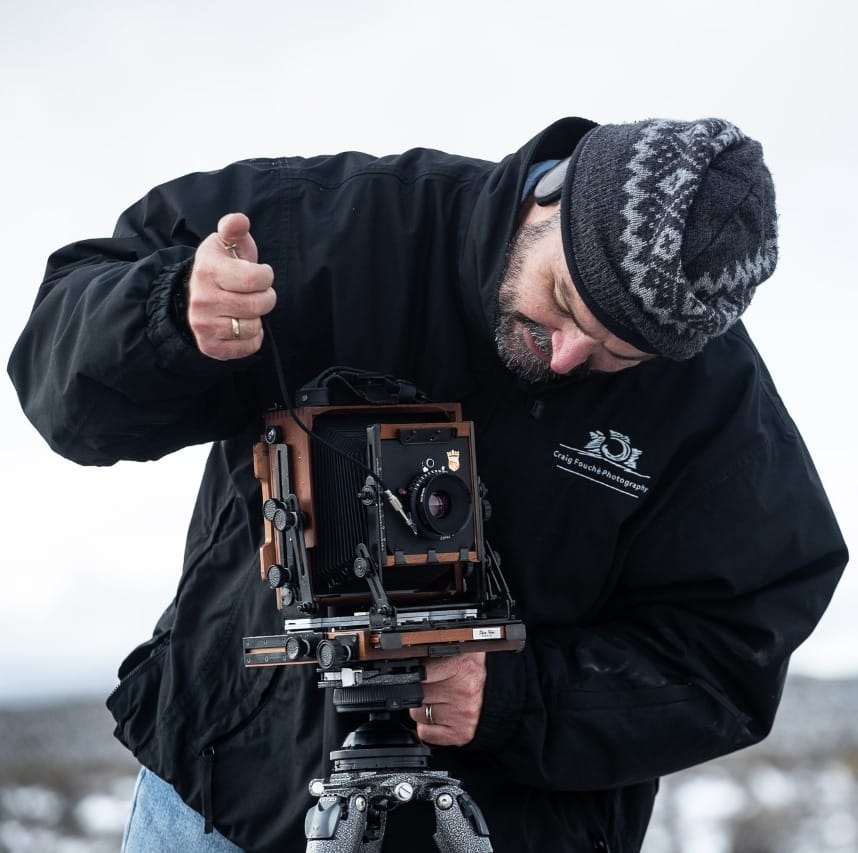
Craig Fouché, Rogge Cloof, Sutherland, South-Africa ©2020 Kirsten Frost Photography